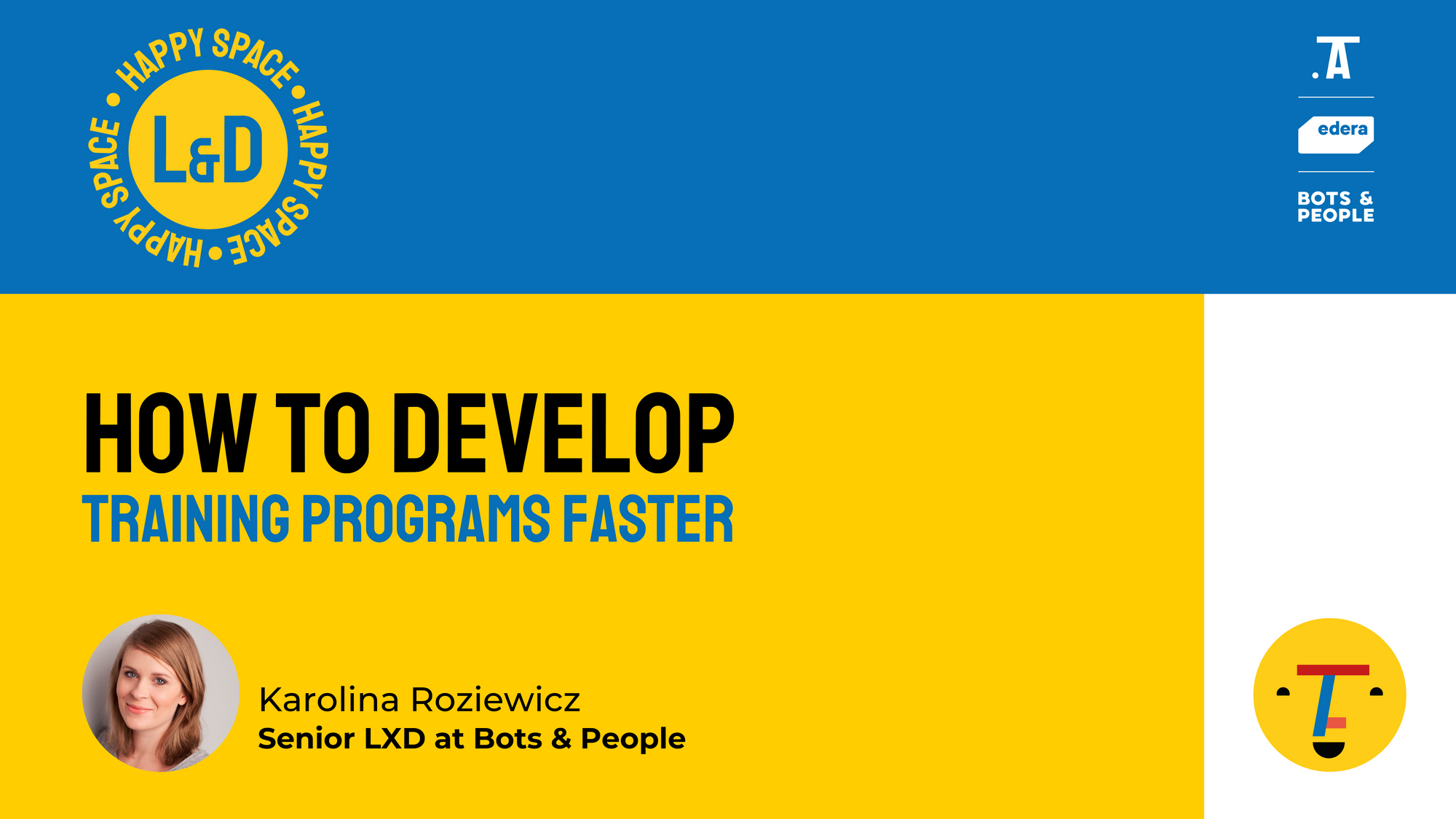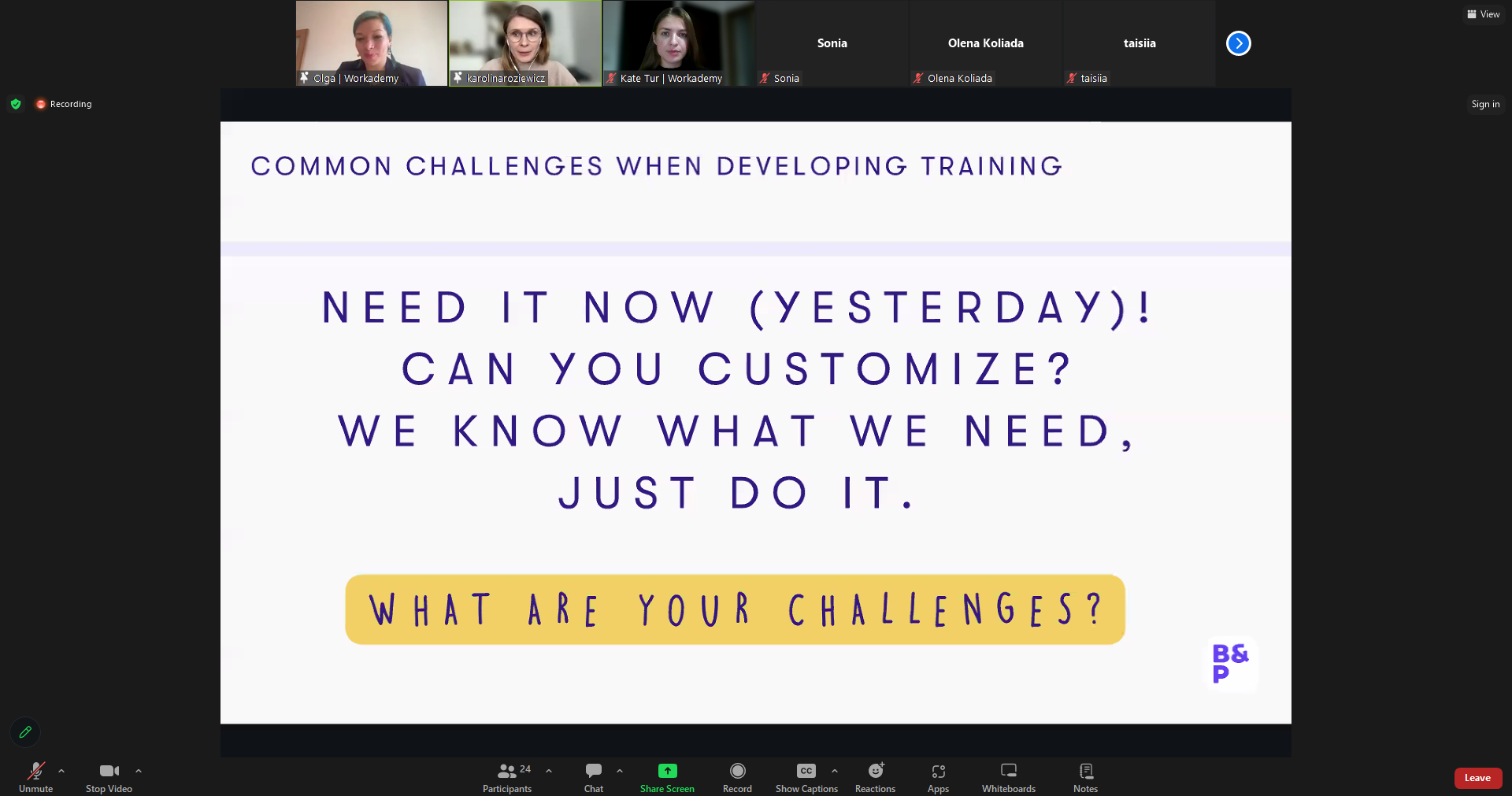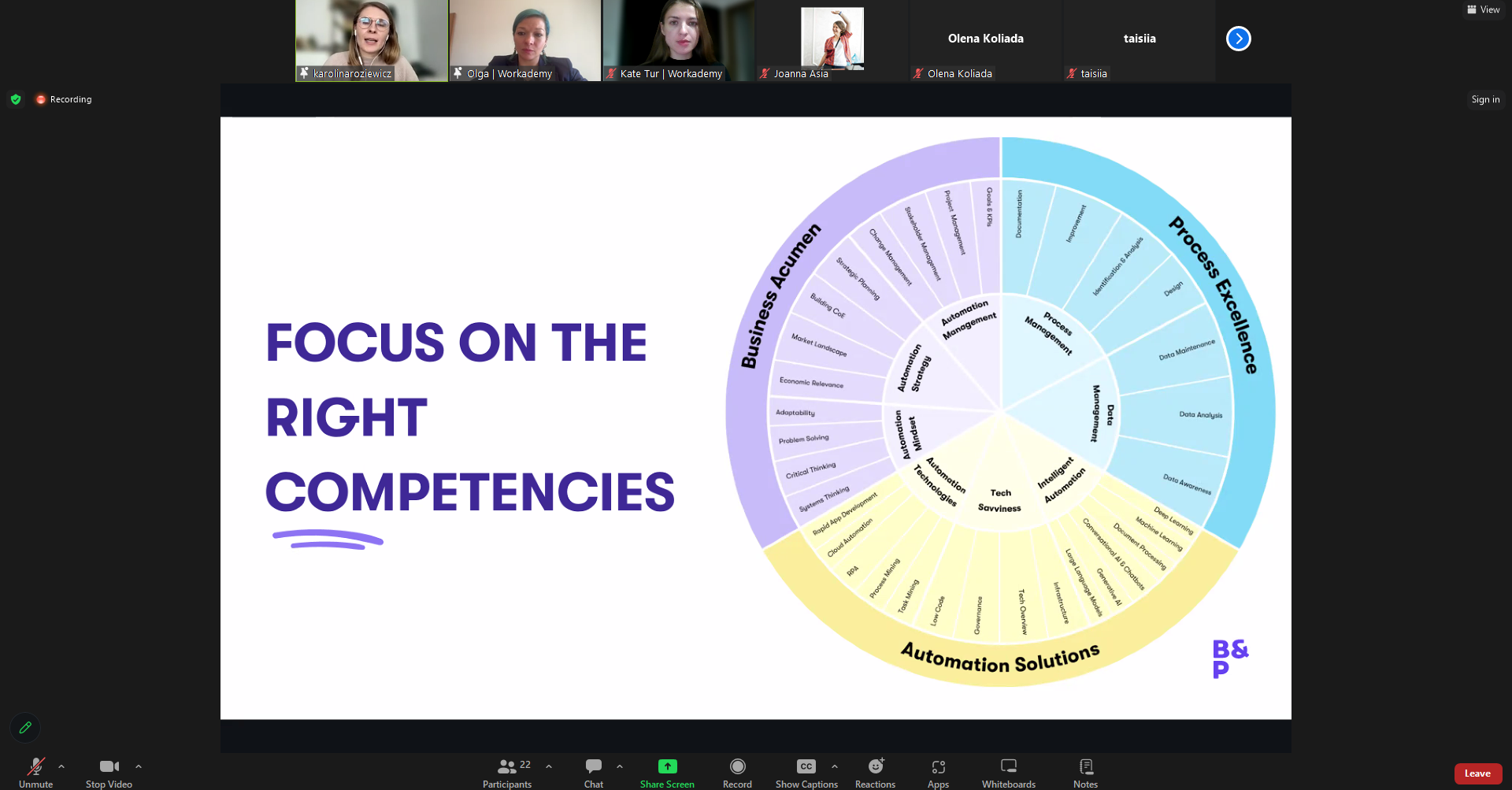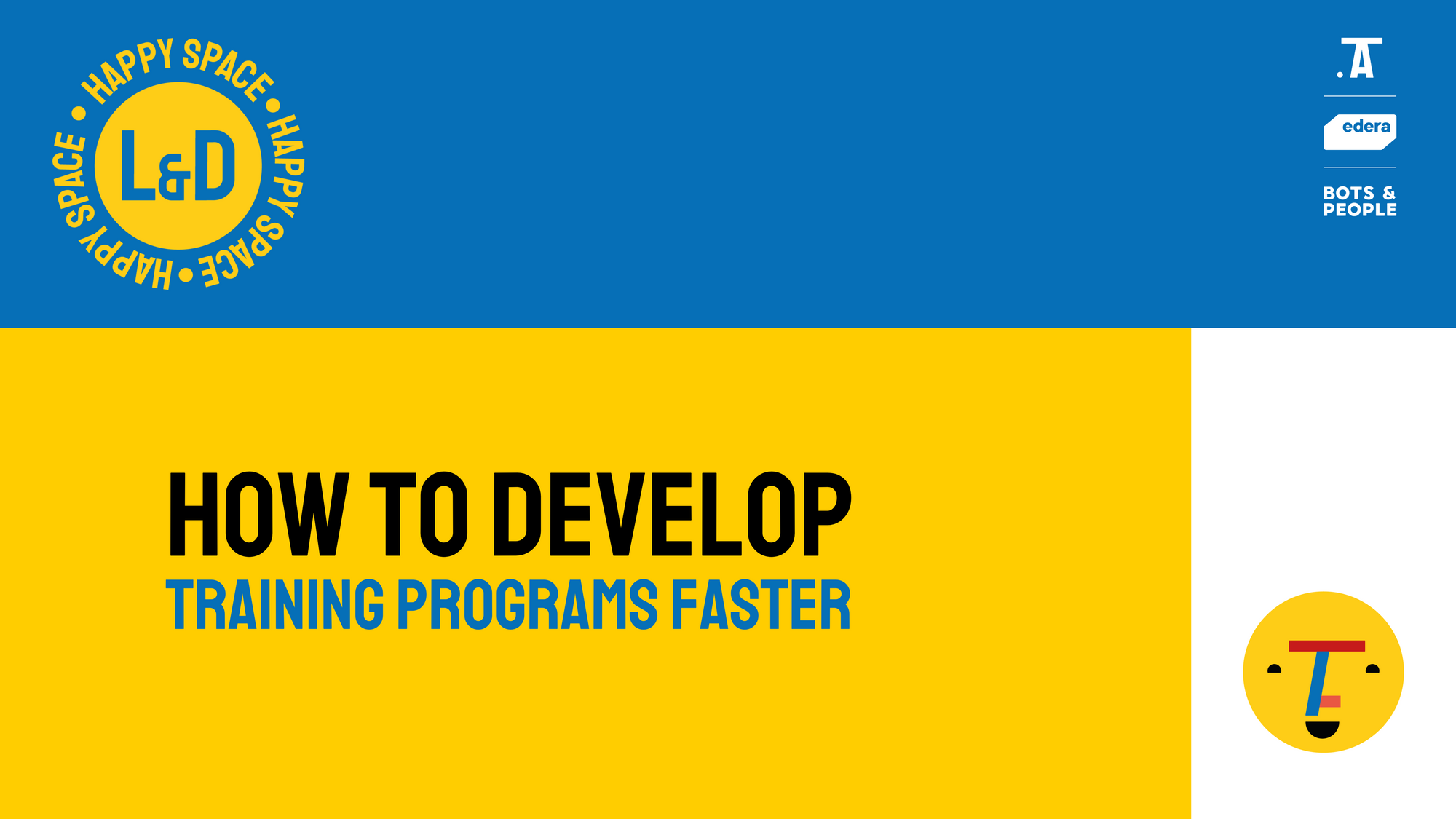Accelerating Training Development: Strategies for L&D Professionals

L&D teams are under increasing pressure to quickly implement training programs in today's fast-paced business environment. However, it is important to prioritize quality alongside speed. During an insightful 💛 L&D Happy Space #18 session, Karolina Roziewicz, Senior LXD from Bots & People shared strategies for efficient yet effective training development.
The Ideal 6-step Process to Design Learning Curricula
A lean, iterative approach can significantly streamline training rollouts. Karolina outlined the ideal 6-step process:
1. Research: Thoroughly understand learner needs and requirements.
2. Prototype: Quickly build a minimum viable product.
3. Validate: Test the prototype with the target audience.
4. Improve: Incorporate feedback to enhance the solution.
5. Repeat: Iterate through the cycle for continuous improvement.
6. Continuous Research: Ongoing data analysis to identify evolving needs.
Karolina highlighted, "Data analysis is often overlooked, but it holds immense value. Understanding organizational data allows us to stay ahead, anticipating needs and offering solutions proactively."
Common Roadblocks
Despite best intentions, L&D initiatives often encounter speedbumps like rushed timelines, assumptions about requirements, and resistance to standardized solutions. Overcoming these mindset barriers through transparent communication is key.

Design Rules for Efficient Training Development
To drive faster training development without compromising quality, L&D professionals must hone two core skill sets:
Technical Skills
• AI-assisted curriculum design tools
• Interaction builders for engaging experiences
• Spaced repetition for reinforced learning
• Simulations for practical skill application
Mental Skills
• Continuous research to anticipate needs
• Design thinking for structured problem-solving
• Openness to automation for streamlined processes
The Modern L&D Toolkit: Embracing AI and Automation
As AI capabilities advance, the roles of L&D professionals are evolving. To stay effective in this changing landscape, L&D professionals must develop new competencies. The modern L&D toolkit encompasses three key pillars: business acumen, process excellence, and automation solutions.

Business Acumen: Skills in needs analysis, project management, and stakeholder management are crucial. Understanding organizational needs and aligning learning initiatives with business goals enables L&D professionals to have a strategic impact.
Process Excellence: Streamlining processes, automation, and data analysis are essential skills. By analyzing data, L&D professionals gain insights into business needs and improve learning strategies. Automation helps save time and enhance efficiency.
Automation Solutions: Familiarity with AI/ML tools like generative AI, chatbots, and intelligent automation is important. Leveraging these tools enhances the learning experience and saves time on repetitive tasks.
The Human Role in AI and Automation: AI and automation should enhance human thinking, not replace it. Validating and thinking critically remain crucial. The focus should be on crafting tailored, structured learning journeys that leverage tools to enhance speed and relevance.
Conclusion: The Way Forward
Invest in tools that combine human-centered design skills with technical capabilities like AI analysis and personalization. Foster an agile mindset through rapid prototyping, iteration based on feedback, and open communication. By combining the right technical tools with essential skills like business acumen and design thinking, L&D teams can deliver impactful training experiences.
By embracing AI and automation while maintaining a human-centered approach, L&D professionals can navigate an accelerated path to deliver effective and impactful training experiences.
To assess your competencies across this modern skillset, take the free AI competency assessment offered by Bots & People.
To try AI-powered course outline generation with Workademy, proceed to this link: https://theworkademy.com/ai
👇 Click to watch the full webinar

